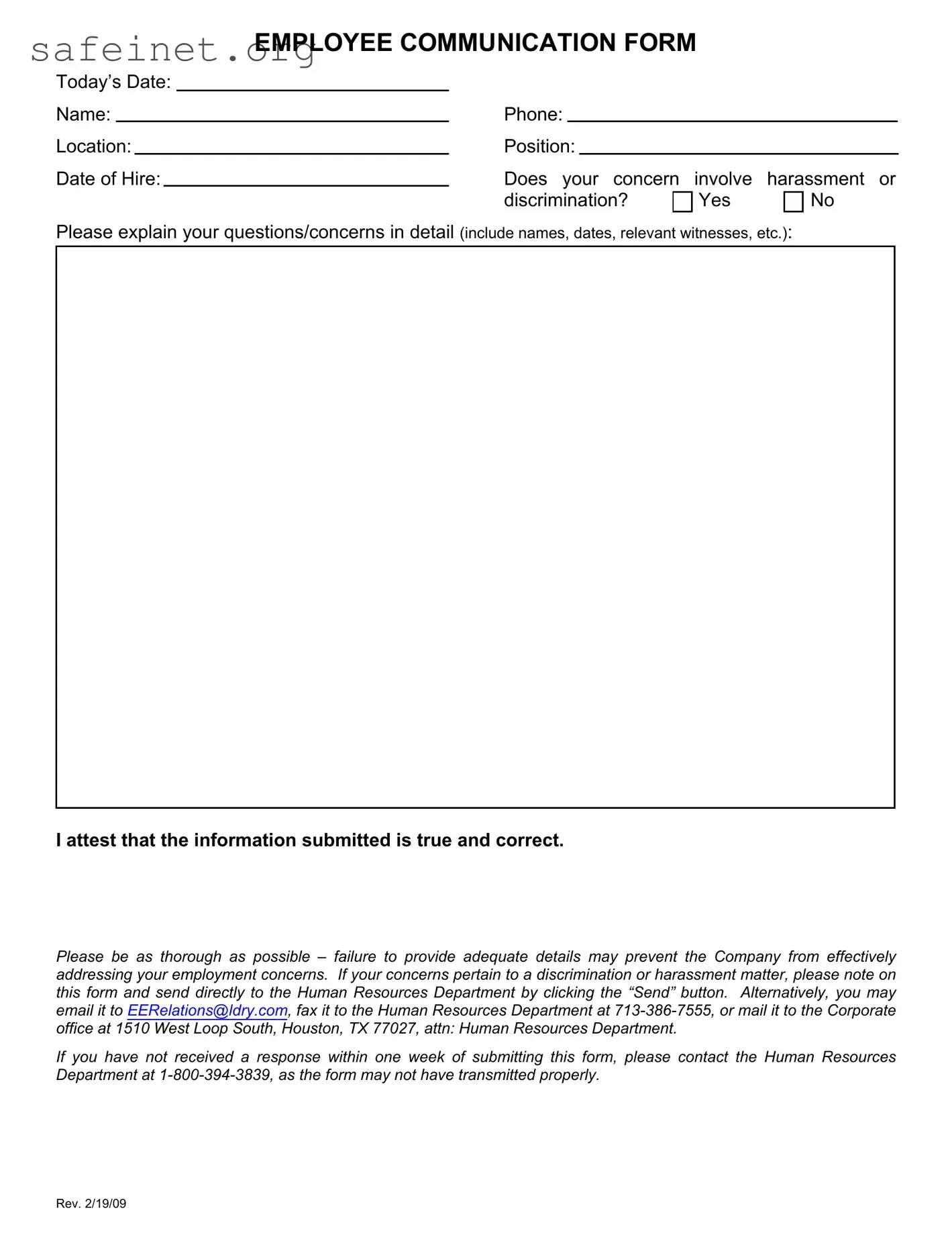What is the purpose of the Employee Communication form?
The Employee Communication form allows employees to air any employment-related concerns. This includes issues like harassment, discrimination, or any other workplace concerns. It aims to ensure that everyone feels heard and supported within the organization.
Who should fill out this form?
Any employee who has a concern related to their work environment should complete this form. It is meant for those facing harassment, discrimination, or any other issue that may affect their job satisfaction or performance.
What information do I need to provide?
You will need to provide your name, phone number, location, position, date of hire, and a detailed explanation of your concerns. Including specific names, dates, and witnesses will help the company better understand and address your issue.
What if my concern involves harassment or discrimination?
If your concern involves harassment or discrimination, be sure to specify this on the form. Direct these forms to the Human Resources Department through the provided options, ensuring that your matter receives the appropriate attention.
How do I submit the form?
You can submit the form by clicking the “Send” button, emailing it to [email protected], faxing it to the Human Resources Department at 713-386-7555, or mailing it to the corporate office at 1510 West Loop South, Houston, TX 77027, attention: Human Resources Department.
What if I don’t receive a response?
If you haven't received a response within one week of submitting your form, it’s important to reach out to the Human Resources Department at 1-800-394-3839. There’s a possibility that your form did not transmit correctly.
Why is it important to provide thorough details?
Providing comprehensive details allows the company to understand your situation better and take appropriate action. Inadequate information may hinder the company’s ability to address your concerns effectively.
Can I remain anonymous when submitting my concerns?
The form does require your name and contact information, but you may discuss your concerns confidentially with HR. They will handle your situation with care and discretion.
What happens after I submit the form?
Once the form is submitted, Human Resources will review your concerns and take action as necessary. They strive to resolve issues promptly and in accordance with company policy.
Is there a deadline for submitting this form?
While there is no strict deadline, it’s advisable to submit your concerns as soon as they arise. Prompt reporting can help ensure the situation is addressed in a timely manner.

